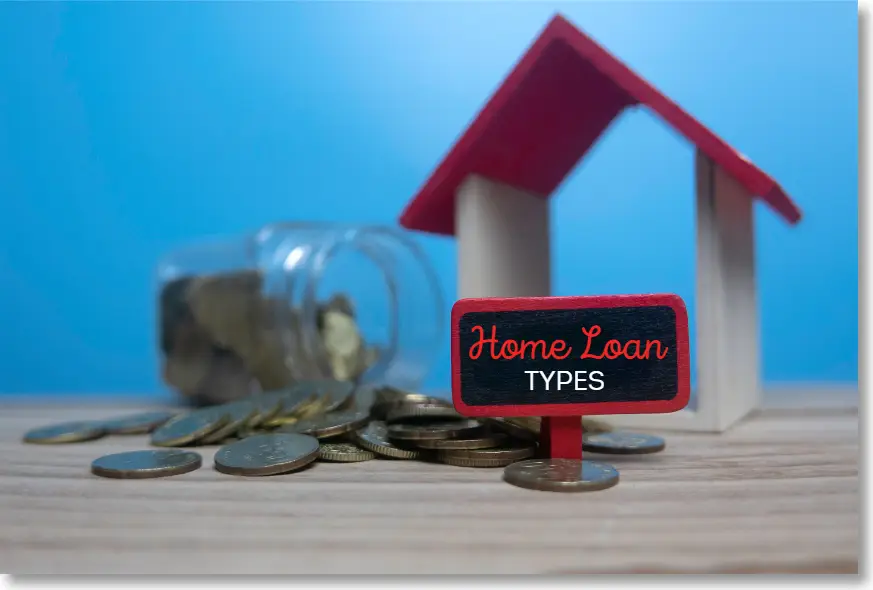Other
Home Loan Types
Home Loan Types

Understanding home loans can feel like navigating a maze, but More Than Mortgages is here to guide you through it. We’ll help you decode the variety of home loans available in Australia, each with its unique features and benefits.
Whether you’re a first-time home buyer, a seasoned property investor, or looking to refinance, choosing the right loan is a key step in your property journey.
We’ll help you understand interest rates, repayment structures, and the pros and cons of each loan type. Here’s a breakdown to help you make an informed decision that aligns with your financial goals.
Basic home loans are an excellent choice for first-time buyers due to their lower interest rates and fewer features. They’re straightforward and often come with minimal fees, making them an attractive option if you’re looking to keep things simple and cost-effective.
Variable rate home loans offer flexibility, with interest rates that can go up or down over time. This type of loan allows for additional repayments and redraws, giving you the freedom to pay off your loan faster without penalty.
Fixed rate home loans provide stability by locking in your interest rate for a set period, usually between one to five years. This means your repayments remain the same during the fixed term, making it easier to budget and plan ahead.
Split home loans let you enjoy the best of both worlds by dividing your loan into fixed and variable portions. This way, you get the stability of fixed repayments and the flexibility to make extra payments on the variable part.
Interest-only home loans are popular among investors. During the interest-only period, your repayments cover only the interest, not the principal, resulting in lower monthly payments. This can be beneficial if you’re looking to manage cash flow or invest in other properties.
Low doc home loans are designed for self-employed individuals or those with irregular income who might find it challenging to provide the usual documentation. These loans require less paperwork and are assessed differently, making them a viable option for many.
At More Than Mortgages, we understand that finding the right home loan can be overwhelming. Our team is here to guide you through the process, ensuring you find the loan that best fits your needs and personal situation. Contact us today to get started on your home loan journey.
Many lenders offer reduced interest rates for a limited time at the beginning of your loan, known as the ‘Honeymoon rate’. This low interest rate typically applies to the first 24 months of the loan.
The advantage is that introductory rate loans (IR loans) can be lower than standard variable rate (SVR) or basic products. However, it’s important to be aware of the catch with IR loans.
After the end of the introductory period, the interest rate usually reverts to a higher than normal variable rate. At this point, it’s a good idea to speak with MTM about switching the loan to another product, such as the SVR or the basic loan, to ensure you’re still getting the best deal.
Typically, a Professional Package will give you the following features:
- Fee-free transaction account (approx. $5 per month)
- Fee-free credit card (if you want it – a platinum-style card which normally costs you ~$250 per annum – you typically also get really good travel insurance with these types of cards)
- Fee-free 100% offset account/s (normally would cost you $5-$14 per month)
- Cheaper insurance (if you want it – home and contents)
- Waives the loan application fee (up to $600 with some lenders)
- You can make post-settlement changes to the loan free of charge (e.g. splitting the loan and/or switching to fixed)
- Redraw facility and loan portability options
- No new charges for any additional loans (e.g. another investment property loan in the future)
- Ability to have multiple loan splits per property (with no monthly charges on each split)
- Interest rate discount off the Standard Variable Rate
A Professional Package is often recommended for property investors due to its comprehensive features and benefits.
At More Than Mortgages, we’re more than just loan experts; we’re your partners in turning your homeownership dream into a reality. If you’re ready to take the first step or just need some questions answered, we’re here for you. Call us or make an appointment with us today!
Pre-Approved Loans
Pre-Approved Loans

Take the guesswork out of your property hunt by getting a pre-approval before you dive in. A pre-approval gives you a clear picture of your borrowing power, so you can confidently check out properties within your budget. This clarity helps streamline your search, saving you time and effort by focusing only on homes you can actually afford.
A pre-approved loan lets you go after your dream property with more confidence. Sellers and real estate agents take pre-approved buyers more seriously because it shows you’re financially ready and committed. This boosts your credibility as a buyer and ups your chances of snagging that perfect place.
What else do you want to know?
A pre-approved loan, also known as Approval-In-Principle (AIP) or Conditional Approval (yes, that’s 3 terms for the same thing! Not confusing at all!), is an indication from a lender about how much you can borrow before you start looking for a property. Different lenders might use different terms, but they all mean the same thing.
If a bank gives you a pre-approval quickly, it might not be very reliable. This is often called a System Pre-Approval, which means your application and accompanying paperwork still need to be checked by a credit assessor. Important checks like credit history, employment, and supporting documents are still pending. Using one of these to bid at an auction could be risky.
The more reliable type of pre-approval is a “Conditional Approval, subject to Contract + valuation”. This type takes about 2-10 business days as it involves a thorough check of your application by a credit assessor. They will look at your financial situation, documents like payslips and bank statements, employment status, and credit history. If there’s any queries that the credit assessor has, it will be addressed at the Pre Approval stage, not after you’ve found a property. They will approve your loan up to a certain amount, provided you find a property and its valuation meets their criteria.
Not necessarily. You can apply for a loan after finding a property, but getting pre-approved has several advantages:
- Know your budget: You’ll know exactly how much you can afford.
- Be ready to buy: You can make an offer on a property knowing your finance is sorted.
- Save time: You’ll focus on properties within your budget.
- Smooth process: Fewer chances of issues with the sale process.
With a pre-approved loan, sellers will take you more seriously, which might be the reason the seller chooses you, over another buyer. If you’re bidding at an auction, having a pre-approval (Conditional Approval subject to contract + valuation) means you can bid with confidence, knowing you have your finance as approved as it can be at this stage. Auctions are unconditional, so if you win, you must settle the purchase, and a pre-approval helps ensure you’re ready.
All loans are based on three key things:
Principal: The principal is the amount of money you borrow from the lender. It’s the foundation of your loan and determines your repayment amounts. The larger the principal, the higher your monthly repayments will be. It’s crucial to borrow only what you need and can afford to repay comfortably, also taking into account possible future interest rate increases.
Interest: Interest is the cost of borrowing money, calculated on the outstanding principal. It’s expressed as a percentage rate, and it can significantly impact the total amount you repay over the life of the loan. Interest rates can be fixed, variable, or a combination of both, each with its own pros and cons. Understanding how interest is calculated and how it affects your repayments is essential for managing your loan effectively.
Serviceability: Serviceability refers to how much the lender believes you can afford to borrow based on your financial situation. This includes your income, living expenses, existing debts, and overall financial health. Lenders use serviceability assessments to ensure you can comfortably meet your loan repayments without undue financial stress, by applying a buffer of around 3% to the actual interest rate that you’re applying for. This is so the lender knows that if rates were to go up by 3% you can still afford the loan repayments. It’s a key factor in determining your borrowing limit and loan approval.
There are many types of loans with different features, so it’s important to understand your options to make the best decision. Some loans offer flexible repayment options, while others might provide offset accounts or redraw facilities. Fixed-rate loans offer stability, while variable-rate loans can offer savings if interest rates decrease. By understanding the basics of principal, interest, and serviceability, you can better navigate the loan landscape and choose the option that best suits your financial needs and goals.
First Home Buyers
First Home Buyers

We get it—buying your first home isn’t just about the money. It’s about making your dream a reality and marking a huge milestone in your life. The journey to homeownership can be a bit of a rollercoaster, but guess what? You don’t have to do it alone. We’re here to guide you every step of the way, with expert advice and support to make the process as smooth and stress-free as possible.
At More Than Mortgages, we take a personal approach to every client’s journey. We know every first home buyer has their own unique story and dreams. Our mission is to tailor our services to fit your specific needs, making sure you feel confident and informed at every stage. With us by your side, you can move forward knowing you have trusted partners dedicated to turning your homeownership dreams into reality.
Steps to Understanding the Home Buying Process
- Getting to Know You: We start by understanding your financial situation, property goals, and any concerns you might have. This helps us tailor our advice specifically for you.
- Education: We’ll explain the key concepts and steps involved in buying a home, including the responsibilities of owning a property.
- Assessment: We’ll review your financial health, including your income, debts, and savings. This is crucial in determining how much you can borrow responsibly.
- Credit Score Insight: Understanding your credit score is essential, as it impacts your loan options. We’ll help you interpret and improve your score if needed.
- Choosing the Right Loan: We explore different loan options and find the most suitable fit based on your financial situation and property goals.
- Application Preparation: We’ll help you gather all necessary documents required for the loan application, ensuring accuracy and completeness to avoid delays.
- Finding Your Home: Once pre-approved, you can start your property search. We can provide tips on what to look for and how to evaluate properties.
- Making an Offer: When you find the right home, we’ll guide you through making an offer and what to expect during negotiations.
- Loan Finalisation: After your offer is accepted, we’ll finalise your loan details with the lender to ensure everything is in place for the purchase.
- Settlement: We oversee the settlement process, coordinating with the lender, real estate agents, and solicitors to ensure a smooth transition to homeownership.
What to Expect from Your MTM Mortgage Broker
Our approach is personalised; we understand that each first home buyer is unique. Expect tailored advice that fits your individual financial situation and homeownership dreams.
We believe in clarity and openness. You’ll always know where you stand in the application process and what your options are.
Buying your first home can be overwhelming, but you’re not alone. We’re here to answer any questions and solve issues as they arise, ensuring you feel confident and informed.
As your trusted advisors, we’re committed to helping you understand the ins and outs of the mortgage process. From decoding financial jargon to understanding market trends, we’ve got you covered.
At More Than Mortgages, we’re more than just loan experts; we’re your partners in turning your homeownership dream into a reality. If you’re ready to take the first step or just need some questions answered, we’re here for you. Call us or make an appointment with us today!
FAQs
1. What’s the first step to buying my first home?
Book a free chat with one of our brokers. We’ll talk about your goals, savings, and borrowing capacity to get you started.
2. How much deposit do I need?
Ideally, 20% is great, but you may be able to get into your first home with as little as 5%, especially with government support schemes.
3. Can I access any government grants or schemes?
Yes – depending on your situation, you might be eligible for the First Home Guarantee, First Home Owner Grant (FHOG), or stamp duty concessions.
4. What documents will I need for a loan application?
Typically, ID, payslips, bank statements, and details about any debts or savings. We’ll guide you through it all.
5. Will I need to pay Lender’s Mortgage Insurance (LMI)?
If you have less than a 20% deposit, yes – unless you qualify for a government scheme that waives it.
- LMI is a one-off insurance premium that’s usually required if you’re borrowing more than 80% of a property’s value (i.e. you have less than a 20% deposit). It protects the lender, not you, in case you default on your loan.
Refinancing
Refinance Your Home Loan

If you’re considering refinancing your home loan, you’re probably looking for better mortgage terms, a lower interest rate, or access to equity for large expenses. Refinancing can be a strategic financial move, providing you with an opportunity to save money, reduce monthly payments, and achieve greater financial flexibility.
By refinancing, you might secure a lower interest rate, potentially saving thousands over the life of your loan. Additionally, accessing your home’s equity can help fund major expenses like home renovations, education, or consolidating high-interest debt.
Refinancing also allows you to adjust your loan terms to better suit your current financial situation, such as switching from a variable to a fixed rate for more stability, or shortening the loan term to pay off your mortgage faster.
Why Consider Refinancing?
- Benefit: One of the most common reasons for refinancing is to take advantage of lower interest rates. Even a slight reduction in the interest rate can significantly reduce your monthly mortgage payments and the total amount of interest paid over the life of the loan.
- Example: If interest rates have dropped since you first took out your mortgage, refinancing to a lower rate can save you thousands of dollars each year.
- Benefit: Refinancing can allow you to access the equity in your home, which you can use for various purposes such as home improvements, paying off high-interest debts, or investing in other opportunities.
- Example: If your home’s value has increased, you might be able to refinance and take out a portion of the equity in cash.
- Benefit: Refinancing can give you the opportunity to change the terms of your mortgage, such as switching from a variable-rate to a fixed-rate loan or vice versa, or altering the loan term to better suit your financial situation.
- Example: You might want to switch from a 30-year mortgage to a 15-year mortgage to pay off your home faster and save on interest costs.
- Benefit: If you have multiple high-interest debts, refinancing can help consolidate them into a single, more manageable mortgage payment, often at a lower interest rate.
- Example: By using the equity in your home to pay off credit card debt, personal loans, or other liabilities, you can simplify your finances and potentially lower your overall monthly payments.
- Benefit: Refinancing can improve your overall financial situation by reducing monthly payments, providing extra funds, or stabilising your mortgage payments with a fixed rate.
- Example: If you’ve improved your credit score or increased your income since you first obtained your mortgage, refinancing might help you secure better loan terms.
The Refinancing Process
- Personal Consultation: We begin by understanding your financial goals and reasons for refinancing. This helps us provide advice that truly matches your needs.
- Financial Review: We’ll assess your current mortgage and overall financial situation to ensure that refinancing is beneficial for you.
- Finding the Best Deal: We compare various loan products from multiple lenders to find the best rates and terms that meet your refinancing goals.
- Cost-Benefit Analysis: We provide a detailed breakdown of costs involved in refinancing and how they compare to the benefits.
- Streamlined Paperwork: We help you gather and prepare all necessary documentation for the refinancing application. Our goal is to make this process as smooth as possible for you.
- Navigating the Process: We submit the application on your behalf and communicate with the lender to ensure a smooth approval process.
- Finalisation: Once approved, we’ll guide you through the settlement process, ensuring that all legal and financial conditions are met.
- Support Until the End: We oversee the transition from your old mortgage to the new one, answering any questions you have along the way.
What to Expect from your MTM Mortgage Broker
We provide personalised advice based on your unique financial situation and refinancing objectives. Our brokers take the time to understand your individual needs, preferences, and long-term goals. By analysing your current financial standing, future aspirations, and any potential changes in your circumstances, we craft a customised refinancing plan that best suits your situation. Whether you’re looking to lower your monthly payments, access equity, or secure a better interest rate, our tailored approach ensures that you receive advice that is both relevant and beneficial.
You’ll receive clear, straightforward explanations of each step in the refinancing process. We aim to demystify the details and keep you well-informed. Our goal is to make the refinancing journey as transparent as possible, avoiding jargon and complex terminology. We provide you with a step-by-step guide, regular updates, and are always available to answer any questions you might have. From the initial consultation to the final approval, you can expect open and honest communication, ensuring that you feel confident and in control throughout the entire process.
Our relationship doesn’t end once you refinance. We’re here for any future questions or needs you might have, whether it’s adjusting your loan or further property planning. We understand that your financial needs may evolve over time, and we are committed to being there for you long after the refinancing is complete. Whether you need advice on managing your loan, assistance with future property investments, or help navigating any changes in your financial situation, our team is always ready to provide ongoing support and guidance.
As your partners in property finance, we are committed to finding you the best possible deal and making your refinancing journey as beneficial and stress-free as possible. We leverage our extensive network of lenders and our deep understanding of the mortgage market to secure the most favourable terms for you. Our commitment goes beyond just finding a good rate; we strive to ensure the entire process is smooth, efficient, and tailored to your needs. Your satisfaction is our top priority, and we work tirelessly to ensure that your refinancing experience not only meets but exceeds your expectations.
Our team is here to ensure you have all the information and support you need to make the best decision for your circumstances. We will guide you through the refinancing process, helping you understand your options and find the solution that best meets your needs and financial goals.
Give us a call or make an appointment today to see how refinancing can fit into your broader financial plan!
Property Investment Loans
Property Investment Loans

Whether you’re a first-time investor or a seasoned pro aiming to expand your portfolio, we’re here to guide you through every step of the property investment process.
Investing in property can offer significant financial benefits, including passive income, capital growth, and tax advantages.
We begin by creating a customised Loan Proposal to show you how your investment finance will be set up. It’s important to avoid cross-collateralisation and to choose a lender that offers features you might need in the future as an investor. We also work closely with accountants to make sure your loans are structured correctly for tax purposes.
With your Loan Proposal, you’ll also get a comparison and recommendation of different lenders. We can arrange financing through traditional lenders or alternative options if needed. We’ll guide you through the entire loan process, from application to settlement, and keep in touch with your conveyancer, buyer’s agent, selling agent, and financial planner if you have one. Think of us as the project managers for your investment journey! We’re here when you don’t know where to turn.
Once your investment property loan is settled, our support doesn’t end there. Within 24 hours of settlement, we contact your new lender to ensure:
- The loan is set up correctly and repayments are coming from the right account.
- The amount of the repayment.
- The date the first repayment is due.
We also check that any extra funds are in the correct account and that offsets are linked correctly. We’ll email you this information, and if you need help figuring out what money should go where, we can assist with that too.
We follow up with you 1 month after settlement to make sure everything is running smoothly, and again at 6 months. At the 12-month mark, we’ll do a full loan review and ask your lender for a lower interest rate. If your rate isn’t competitive, we’ll discuss refinancing options with you. We’ll also keep track of any Fixed or Interest Only loans expiring.
Reasons to Invest in Property
- Capital Growth: Real estate typically appreciates over time, providing potential long-term capital gains. By investing in property, you are positioning yourself to benefit from the natural increase in property values, which can significantly boost your net worth over the years.
- Equity Building: As you pay down your mortgage, you build equity in your property. This equity can be leveraged for further investments or to improve your financial standing, contributing to your long-term wealth accumulation.
- Rental Yields: Earning regular rental income can provide a steady cash flow and potentially cover mortgage and property maintenance costs. This income stream can supplement your primary earnings, offering financial stability and the ability to reinvest in additional properties.
- Diversified Income Streams: Investing in multiple properties or different types of real estate can diversify your income sources. This diversification helps reduce risk and ensures a more stable and reliable passive income, even if one property experiences vacancies or other issues.
- Deductions: Investors can often deduct property-related expenses from their income taxes, such as interest on loans, property management fees, and maintenance. These deductions can significantly lower your taxable income, increasing your overall returns from the investment.
- Depreciation: You can also claim depreciation on the property, which is a non-cash deduction that accounts for the wear and tear of the property over time. This can further reduce your taxable income, providing substantial tax savings and enhancing the profitability of your investment.
- Risk Management: Property can be a relatively stable investment, offering diversification away from more volatile markets. By including real estate in your investment portfolio, you can reduce overall risk and enhance the stability of your returns, as property values tend to be less susceptible to short-term market fluctuations compared to stocks or other financial instruments.
- Diversifying your investments across different types of assets, including real estate, helps balance your portfolio. Real estate investments can provide a hedge against inflation and economic downturns, ensuring that your portfolio remains resilient and capable of weathering various market conditions. This strategic allocation can improve the overall performance and security of your investments over time.
The Property Investment Process
- Investment Planning: We start by understanding your financial goals, investment timeline, and risk tolerance to tailor an investment strategy that suits your needs.
- Market Analysis: Our experts provide insights into market trends, potential growth areas, and the types of properties that align with your investment goals.
- Financial Health Check: We assess your financial situation to determine your borrowing capacity and ensure you have the financial stability to invest.
- Loan Options: We compare different investment loan options to find one that offers the best rates and terms for your situation.
- Identifying Opportunities: We help you identify properties that match your investment criteria, including location, property type, and budget.
- Due Diligence: We guide you through the due diligence process to ensure the property meets all your investment expectations and legal standards.
- Making an Offer: Once you’ve selected a property, we’ll assist you in making an informed offer and negotiating terms.
- Loan Application: We handle all aspects of the loan application process, from documentation gathering to submission.
- Closing the Deal: We ensure the closing process goes smoothly, managing all the necessary paperwork and legal details.
- Ongoing Support: Our team remains available to help with property management, further investments, or refinancing needs as your portfolio grows.
What to Expect from Your Expert Mortgage Broker
Receive informed advice based on deep market knowledge and years of experience in property investment. Our team of seasoned professionals is dedicated to helping you navigate the complexities of the property market. With extensive industry insights and a keen understanding of market trends, we provide you with the expert guidance needed to make sound investment decisions. Our goal is to leverage our expertise to maximise your returns and minimise risks, ensuring your investment journey is both profitable and secure.
We understand that every investor’s needs are unique. Expect a customised service that respects your individual investment journey. Our personalised approach begins with understanding your financial goals, risk tolerance, and investment preferences. We tailor our strategies and recommendations to align with your specific requirements, ensuring that your investment plan is as unique as you are. By offering bespoke solutions, we aim to provide you with a seamless and personalised experience that sets you on the path to achieving your investment aspirations.
We keep you informed throughout the process, providing clear, jargon-free explanations every step of the way. Transparency is at the core of our service. We believe in maintaining open lines of communication, ensuring that you are always aware of the progress and developments related to your investment. Our team is committed to demystifying the property investment process, providing you with straightforward, easy-to-understand information. This approach empowers you to make informed decisions with confidence, knowing that you are fully aware of all aspects of your investment.
From initial consultation to post-purchase management, we are here to support and ensure you feel confident about your investment decisions. Our commitment to your success doesn’t end with the purchase of a property. We offer ongoing support to help you manage and optimise your investment portfolio. Whether you need assistance with property management, tenant relations, or financial planning, our team is here to provide the guidance and support you need. Our dedicated support ensures that you have a trusted partner by your side, helping you navigate the challenges and opportunities of property investment with ease and assurance.
Investing in property is a significant decision, but you don’t have to navigate it alone. We are committed to helping you achieve your investment goals with as much clarity and confidence as possible. Call us or make an appointment today to start your property investment journey!
Construction Loans
Construction Loans

If you’re planning to build your dream home or undertake a significant renovation, a construction loan might be just what you need. This specialised type of loan is designed to finance the building process, providing the necessary funds in stages that align with the progress of construction.
Unlike traditional home loans, construction loans offer the flexibility to draw down funds as needed, ensuring you only pay interest on the amount used during each phase of the project. This can be particularly beneficial in managing cash flow and keeping your budget on track.
Understanding and securing a construction loan can seem complex, but we’re here to help simplify the process. From the initial consultation to loan settlement and beyond, we guide you through each step, ensuring you have a clear understanding of your financing options.
Why Consider a Construction Loan?
- Tailored Design: A construction loan allows you to create a home that perfectly matches your preferences and lifestyle needs.
- Control Over Budget: Building a home can be cost-effective, as you decide on the materials and features that fit your budget.
- Cash Flow Management: Payments are typically structured in stages, which means you only pay interest on the portion of the loan that has been drawn down, helping manage cash flow more effectively during construction.
- Immediate Equity: Constructing a new home or renovating extensively can significantly increase the property’s value upon completion.
The Construction Loan Process
- Initial Consultation: We begin with a discussion about your construction plans, budget, and timelines. Understanding the full scope of your project helps us tailor your financing options.
- Loan Pre-approval: We assess your financial situation and help secure pre-approval so you have a clear idea of your budget constraints and financing limits.
- Gathering Quotes: You’ll need detailed quotes from builders and contractors, which we’ll review together to ensure they align with your financial plan.
- Council Approvals: We assist in making sure all necessary council approvals are in place, which is essential before loan funds can be disbursed.
- Application Submission: We help you compile and submit all required documentation for the construction loan application.
- Loan Settlement: Once approved, the loan setup will be finalised, and you’ll be ready to start construction.
- Managed Drawdowns: Funds are released in stages according to construction progress, which we monitor to ensure disbursements align with completed work.
- Ongoing Support: Throughout the construction phase, we’ll be on hand to manage the drawdown schedule, liaise with the builder, and ensure all financial aspects are handled smoothly.
- Final Inspection: Upon construction completion, a final inspection ensures everything is according to plan before the final loan disbursement.
- Transition to Permanent Loan: We guide you through converting your construction loan into a standard home loan if applicable.
What to Expect from Your MTM Mortgage Broker
Construction loans require detailed understanding, and our brokers are equipped with the expertise to guide you through every step.
We provide tailored advice and solutions, adjusting our support to fit the specifics of your construction project.
Expect transparency and clarity. We explain complex financial terms and loan structures in simple language, ensuring you understand every detail.
As your construction progresses, we proactively manage the financial aspects, keeping you informed and ensuring that deadlines are met.
Building a new home is an exciting venture, and with More Than Mortgages, you have a partner every step of the way. Let us help you navigate the complexities of construction loans so you can focus on making your dream home a reality. Call us or make an appointment with us today to discuss your project and how we can assist you!
Self-Employed Loans
Self-Employed Loans

If you’re self-employed, navigating the mortgage process can be tricky, but with the right guidance, getting a home loan is totally doable. We’re pros at understanding the unique financial situations of self-employed Aussies.
Whether you’re buying a home, investing in property, or refinancing, we know your income might not look like a regular pay cheque. We take the time to get to know your business and dive into your financial statements, tax returns, and other key docs to get a full picture of your financial health.
Our experienced brokers get the challenges you face, like fluctuating income and complex tax setups. We’re here to help you overcome those hurdles and secure the loan you need.
Challenges for Self-Employed Applicants
- Fluctuating Earnings: Self-employed individuals often experience variable income, which can complicate the assessment of loan affordability.
- Irregular Payment Cycles: Payments may come at irregular intervals, adding another layer of complexity to financial planning.
- Documentation Requirements: Lenders typically require detailed proof of income. This can mean providing tax returns, business accounts, and financial statements for the past two years or more.
- Consistent Record-Keeping: Maintaining accurate and consistent financial records is essential, yet challenging for many self-employed individuals.
- Stricter Criteria: Lenders typically want to see a minimum of 24 months ABN registration, plus at least 1 full years financials. This is important to keep in mind if you’re considering switching from a PAYG employee to self employed.
- Higher Interest Rates: For self employed borrowers that can’t supply the above (acceptable ABN registration timeframes, financials etc), then self employed borrowers can still get a loan, however they’ll face higher interest rates due to the perceived higher risk.
Loan Application Process for Self-Employed People
- Understanding Your Needs: We start by discussing your property goals and reviewing your financial situation. This helps us understand what you’re looking for in a loan and how best to approach lenders.
- Advising on Documentation: We’ll explain exactly what documents you’ll need to prepare to present a strong case to lenders.
- Setting Expectations: We outline the process and set realistic expectations for timelines and outcomes.
- Income Verification: We help you compile comprehensive proof of your income, taking into account the nature of your self-employment.
- Credit Check: Understanding your credit history is crucial. We’ll review it together and provide tips on how to improve it if necessary.
- Expense Analysis: We analyse your expenses to provide a clear picture of your financial stability.
- Loan Comparison: We compare various loan products that cater to the self-employed, focusing on those that offer the most favourable terms based on your unique financial profile.
- Pre-approval: Securing pre-approval can give you a clear idea of your borrowing capacity and strengthen your position when making property offers.
- Risk Assessment: We assess potential risks and suggest strategies to mitigate them.
- Documentation and Application: We guide you through the entire application process, ensuring all paperwork is complete and accurate to increase the likelihood of approval.
- Liaison with Lenders: We communicate directly with lenders on your behalf, addressing any concerns they may have about your self-employment status.
- Application Tracking: We track the progress of your application and provide regular updates.
- Navigating to Approval: We monitor the application’s progress and keep you updated every step of the way.
- Closing the Deal: Once approved, we assist with the final steps to secure the loan, ensuring everything is in order for a smooth transaction.
- Post-Approval Support: We offer ongoing support to help you manage your mortgage and financial health.
What to Expect from Your MTM Mortgage Broker
- We understand the nuances of self-employed financial assessments and bring expertise in securing loans that match your circumstances.
- Our brokers stay updated on the latest lending criteria and industry trends.
- Every self-employed client has different needs and financial profiles. Expect personalised service tailored to your specific situation.
- We offer flexible loan solutions to match your unique financial circumstances.
- We keep the lines of communication open, providing clear and regular updates throughout the loan process.
- We ensure you understand each step and the reasons behind every decision.
- As your mortgage broker, we act as your advocate with lenders, ensuring they understand the full picture of your financial health and business viability.
- Negotiation Skills: We leverage our expertise to negotiate the best possible terms on your behalf.
Securing a loan as a self-employed individual requires thorough preparation and understanding of the lending landscape. At More Than Mortgages, we are committed to helping you achieve your property goals with as much clarity and confidence as possible.
Call us or make an appointment with us today to see how we can help you navigate your mortgage options!
Self-Managed Super Fund (SMSF) Loans
Self-Managed Super Funds Loans

Investing in property through a Self-Managed Super Fund (SMSF) is an excellent way to enhance your retirement savings and diversify your investment portfolio.
With an SMSF loan, you can borrow money within your super fund to purchase residential or commercial property, which the fund will own and manage. Understanding the regulations and compliance requirements is crucial to making the most of this opportunity while staying within legal guidelines.
That’s where we come in! We specialise in helping clients secure SMSF loans and provide expert guidance throughout the process. Some of us on the team have investment properties in our own SMSFs, so we can offer advice from personal experience.
We’ll help you navigate the complexities of SMSF borrowing, from understanding the necessary trusts (SMSF Trust and Bare Trust) and eligibility criteria to selecting the right lender and loan structure for your needs. We can also connect you with the professionals who set up our personal SMSFs, assist with rollover forms, and set up an SMSF bank account.
We’ll also give you some guidance on the type of property to buy, for example, it’s recommended to purchase positively geared properties only as you don’t have any negative gearing benefits when buying a property in your SMSF, and you don’t want any shortfall eating away at your superannuation funds. Sounds like a lot to think about, but we’ll be with you every step of the way.
Why Consider an SMSF Loan?
- Investment Growth: Property purchased through an SMSF can benefit from capital growth, potentially increasing the value of your retirement fund.
- Steady Income Stream: Rental income from SMSF property can provide a consistent income stream, bolstering your retirement savings.
- Risk Management: Property can be a less volatile investment compared to stocks, offering a balance in your overall investment strategy.
- Asset Variety: Including property in your SMSF allows for a mix of asset types, reducing the risk associated with having a single asset class.
- Borrowing Power: If you have hit a servicing wall, and are unable to buy another property due to your borrowing capacity not being enough, buying within a SMSF might be the way to attain the next Investment Property.
- Benefit: SMSF loan servicability ignores any other properties and mortgages you may hold personally. For example, if you have 10 properties owned in your own name (or even in trust structures) outside of super, the SMSF loan servicability requirements ignore all assets and liabilities held outside of super, including ignoring your personal living expenses.
- Concessional Tax Rates: Rental income and capital gains from the property may be taxed at a concessional rate within the SMSF, which can be significantly lower than personal tax rates.
- Tax-Deferred Growth: Earnings on investments within the SMSF are generally taxed at a lower rate, allowing more funds to be reinvested for growth.
- Direct Investment Decisions: An SMSF gives you the control to make direct investment decisions about the property, including tenant selection and lease terms.
- Customised Investment Strategy: You have the flexibility to tailor your investment strategy to your financial goals and risk tolerance, making adjustments as needed.
The SMSF Loan Application Process
- Establish Your SMSF: If you haven’t already, we assist in setting up your SMSF, ensuring it is compliant with Australian Superannuation laws.
- Investment Strategy: Your fund needs an investment strategy that includes the rationale for holding property, which we help develop.
- Eligibility Check: We review your SMSF’s structure, financial health, and compliance to ensure it meets lender criteria for loan eligibility.
- Pre-Approval Process: Obtaining pre-approval gives you a clear idea of your borrowing limits and strengthens your position when bidding on properties.
- Identifying Suitable Properties: We help identify properties that meet both your investment criteria and the legal requirements applicable to SMSF property investments.
- Due Diligence: Ensuring the property is a sound investment and meets all regulatory requirements is crucial, which we facilitate.
- Application Submission: We guide you through compiling and submitting the necessary documentation required by lenders for an SMSF loan.
- Negotiation with Lenders: We negotiate terms with lenders to secure the most favourable loan conditions for your SMSF.
- Finalising the Purchase: We ensure all legal and financial aspects of the property purchase are managed correctly, aligning with SMSF regulations.
- Ongoing Management: Post-purchase, we can assist with the ongoing management of the property within your SMSF, ensuring compliance and optimal performance.
What to Expect from Your MTM Mortgage Broker
- Expert Guidance: Our brokers are well-versed in the complexities of SMSF loans and property investment, equipped to guide you through each step. This includes understanding legal requirements, compliance issues, and the best strategies for leveraging your SMSF.
- In-Depth Analysis: We provide detailed analysis and insights into the property market, helping you make informed decisions that align with your SMSF investment goals.
- Customised Strategies: We provide custom advice that respects the unique aspects of your superannuation goals and financial situation. This ensures that your investment plan is tailored to your specific needs and risk tolerance.
- Holistic Planning: Our approach considers your entire financial picture, ensuring that your SMSF investments complement your overall retirement strategy and long-term financial objectives.
- Clarity and Simplicity: Expect clarity about each phase of the loan application and property investment process, with all your questions answered in simple, understandable terms. We aim to demystify the process, making it accessible and straightforward.
- Regular Updates: We keep you informed with regular updates and progress reports, ensuring you are always aware of the status of your loan application and investment.
- Comprehensive Assistance: From setup to purchase to ongoing management, we are here to support and advocate for your SMSF’s best interests. Our support extends beyond the initial loan approval, assisting you with any challenges that arise during the life of your investment.
- Personalised Service: You will receive personalised attention from our dedicated team, who are committed to ensuring your SMSF property investment is successful and meets your financial goals.
Investing in property through your SMSF can significantly enhance your retirement strategy, offering both financial growth and tax benefits. With our expertise in SMSF loans, we ensure that your journey into property investment is informed, compliant, and aligned with your retirement objectives.
Call us or make an appointment with us today to discuss how we can support your SMSF property investment plans!
